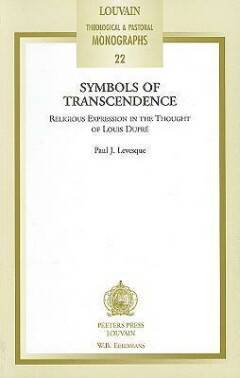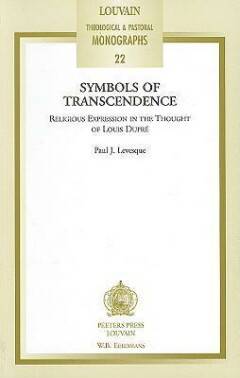
- Afhalen na 1 uur in een winkel met voorraad
- Gratis thuislevering in België vanaf € 30
- Ruim aanbod met 7 miljoen producten
- Afhalen na 1 uur in een winkel met voorraad
- Gratis thuislevering in België vanaf € 30
- Ruim aanbod met 7 miljoen producten
Zoeken
Symbols of Transcendence. Religious Expression in the Thought of Louis Dupre
Religious Expression in the Thought of Louis Dupre
Pj Levesque
€ 21,69
+ 43 punten
Omschrijving
The dynamic of religious expression employs symbolic language, actions, and art. These symbols are symbols of transcendence because it is transcendence which is the unique referent that sets apart symbols which give rise to religious understanding from symbols which do not. The main objective of this book is to demonstrate that in Louis Dupre's work all religious expression, insofar as it has a transcendent reference, is intrinsically symbolic. Religious language is never purely objective nor purely subjective, but a dialectical relation with a transcendent dimension. True to the teachings of Dupre, this book uncovers that without a transcendent referent, religious symbols lose their religious significance. This is the plight of the (late-post)modern condition which resulted from the fracturing of nature into its cosmic, human and transcendent components. To regain a sense of transcendence the believer is forced to make an inward turn akin to the mystical practice of past ages. This does not recover a sense of transcendence for culture but can do so for the believer's personal spiritual life.
Specificaties
Betrokkenen
- Auteur(s):
- Uitgeverij:
Inhoud
- Aantal bladzijden:
- 381
- Taal:
- Engels
- Reeks:
- Reeksnummer:
- nr. 22
Eigenschappen
- Productcode (EAN):
- 9789068319613
- Verschijningsdatum:
- 1/01/1997
- Uitvoering:
- Paperback
- Formaat:
- Trade paperback (VS)
- Afmetingen:
- 140 mm x 218 mm
- Gewicht:
- 498 g

Alleen bij Standaard Boekhandel
+ 43 punten op je klantenkaart van Standaard Boekhandel
Beoordelingen
We publiceren alleen reviews die voldoen aan de voorwaarden voor reviews. Bekijk onze voorwaarden voor reviews.











